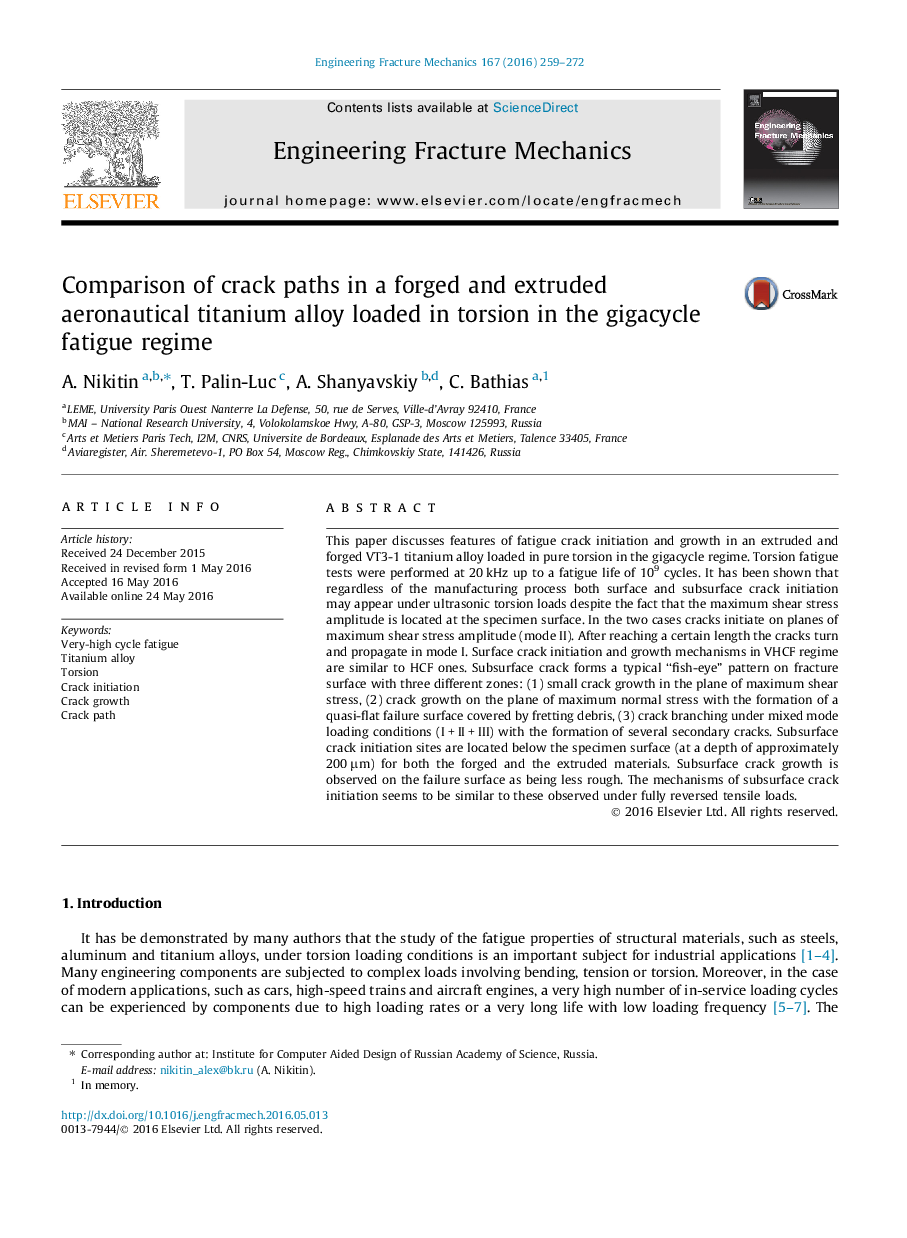| کد مقاله | کد نشریه | سال انتشار | مقاله انگلیسی | نسخه تمام متن |
|---|---|---|---|---|
| 5014243 | 1463061 | 2016 | 14 صفحه PDF | دانلود رایگان |
عنوان انگلیسی مقاله ISI
Comparison of crack paths in a forged and extruded aeronautical titanium alloy loaded in torsion in the gigacycle fatigue regime
ترجمه فارسی عنوان
مقایسه مسیرهای ترک در یک آلیاژ تیتانیوم هواپیما فشرده و اکسترود شده با پیچشی در رژیم خستگی دوچرخه سواری
دانلود مقاله + سفارش ترجمه
دانلود مقاله ISI انگلیسی
رایگان برای ایرانیان
کلمات کلیدی
خستگی چرخه بسیار زیاد، آلیاژ تیتانیوم، پیچ خوردگی آغاز قاچاق رشد کراک، مسیر کراک،
موضوعات مرتبط
مهندسی و علوم پایه
سایر رشته های مهندسی
مهندسی مکانیک
چکیده انگلیسی
This paper discusses features of fatigue crack initiation and growth in an extruded and forged VT3-1 titanium alloy loaded in pure torsion in the gigacycle regime. Torsion fatigue tests were performed at 20 kHz up to a fatigue life of 109 cycles. It has been shown that regardless of the manufacturing process both surface and subsurface crack initiation may appear under ultrasonic torsion loads despite the fact that the maximum shear stress amplitude is located at the specimen surface. In the two cases cracks initiate on planes of maximum shear stress amplitude (mode II). After reaching a certain length the cracks turn and propagate in mode I. Surface crack initiation and growth mechanisms in VHCF regime are similar to HCF ones. Subsurface crack forms a typical “fish-eye” pattern on fracture surface with three different zones: (1) small crack growth in the plane of maximum shear stress, (2) crack growth on the plane of maximum normal stress with the formation of a quasi-flat failure surface covered by fretting debris, (3) crack branching under mixed mode loading conditions (I + II + III) with the formation of several secondary cracks. Subsurface crack initiation sites are located below the specimen surface (at a depth of approximately 200 μm) for both the forged and the extruded materials. Subsurface crack growth is observed on the failure surface as being less rough. The mechanisms of subsurface crack initiation seems to be similar to these observed under fully reversed tensile loads.
ناشر
Database: Elsevier - ScienceDirect (ساینس دایرکت)
Journal: Engineering Fracture Mechanics - Volume 167, November 2016, Pages 259-272
Journal: Engineering Fracture Mechanics - Volume 167, November 2016, Pages 259-272
نویسندگان
A. Nikitin, T. Palin-Luc, A. Shanyavskiy, C. Bathias,
